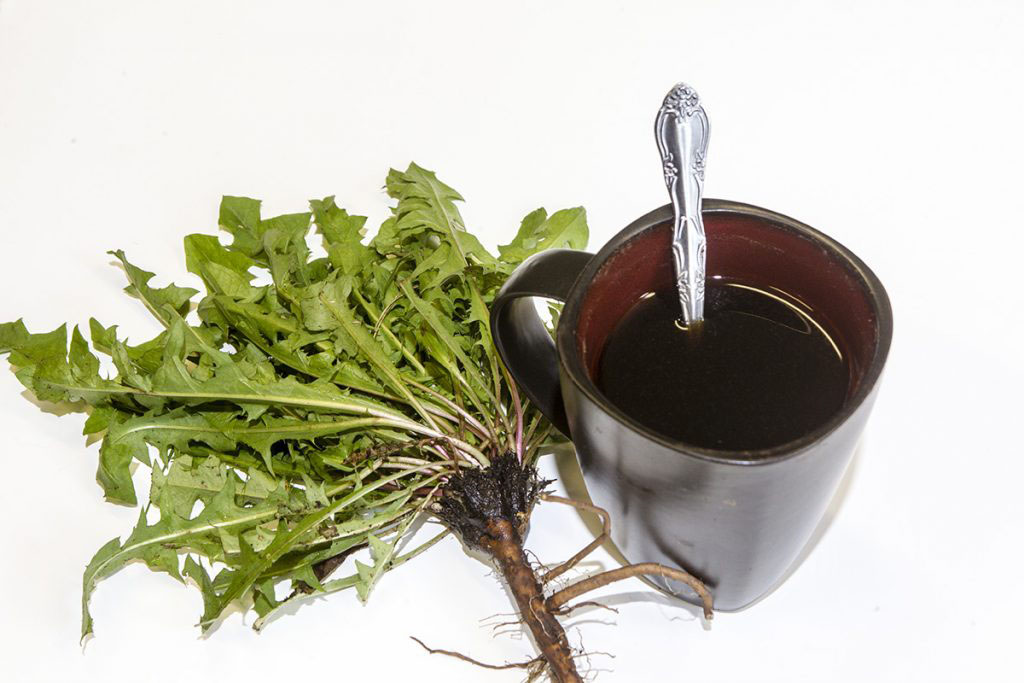
By Julie Geiser
During the fall and into the winter months, some of the best edibles are available. After the edibles of summer are gone, the roots of several plants can be utilized.
Dandelion Root
Dandelions (Taraxacum) grow from a long taproot. A first-year plant will have a root similar to that of a parsnip, bearing a light color and its flesh almost uniform when cross sectioned. An older plant’s root surface, however, is rougher and darkens to a brown color. These roots will branch out with smaller roots coming off the main taproot.
The best roots to gather are from large, young plants in good growing conditions such as crop fields or gardens where they get plenty of water and grow in good soil types. These young plants have tender roots that make a great vegetable for the table, though it is difficult to tell an old plant from a new one unless you keep records and mark plants, which many people don’t do. Even if you dig up older plants, the roots can still be used in a coffee drink described below.
Dandelion roots can be dug any time of year, but fall, winter and early spring are hands-down the best time for their flavor. Dig the roots with a shovel to get most of the root. Wash and scrub them thoroughly and then boil. Serve these with butter and salt as a side dish, in casseroles or with other vegetables.
Chicory Root
Chicory root (Cichorium) is another vegetable and is used similarly to the dandelion. First-year roots are typically small, and many chicory plants grow in hard, gravelly soil, which can make them challenging to dig up without breaking the roots, which oftentimes makes them unsuitable for the table.
Dandelion and chicory roots can be stored overwinter in a root cellar and will last a longtime in the refrigerator if kept in a plastic bag to prevent them from drying out. Like dandelion roots, chicory roots may also be used to make a delightful coffee drink. This is an ancient tradition in Europe, and both plants are grown commercially for this purpose. This caffeine-free drink is healthy alternative to the typical coffee we know and is full of vitamins C, A, D, B and beta-carotene along with many others.
To make coffee, dig and wash several roots from either plant. Do not peel them, and you don’t have to remove the root hairs. Dry the roots on a rack for a week or two either whole or cut into smaller pieces. These roots will last several years once dry. Roast the dried roots for 20 to 60 minutes in a 325 degree Fahrenheit oven; after 20 minutes check them every 10 minutes for doneness. The roots should be very dry and brittle and smell a bit like chocolate when done.
There are a wide variety of roasting instructions; the key is to experiment. Roots not baked long enough have little flavor and won’t snap in two, while over-baked roots will taste burnt. The roots can be baked fresh but the roasting time will be longer and should be done at a lower temperature; it is more difficult to uniformly roast fresh roots.
Roasted roots can be stored whole or ground in a coffee grinder, blender or with a mortar and pedestal, and stored in an airtight container. The root powder can be used like instant coffee by adding one or two teaspoons to a cup of water and boiling for about two minutes on a stove top or in a microwave. Boiling the mixture extracts more flavor from the roots. Strain the mixture through a coffee filter before drinking. Whether you prefer your coffee plain or with a little cream, sugar or vanilla, the flavor is pleasing and tastes like regular coffee. Drinking root coffee does act as a natural diuretic.
As with any wild edible, be sure you’re not collecting from an area that has been sprayed with chemicals and leave half or more of the plants to go to seed to ensure a crop for the next growing season.
